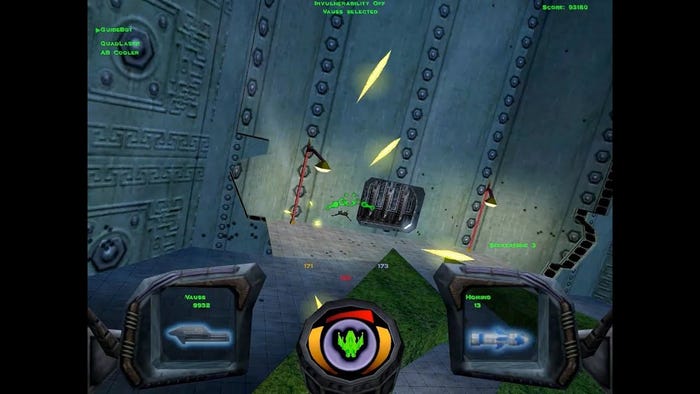At a talk delivered at GDC Europe, Neil Alphonso, lead designer on Splash Damage's Brink, outlined the way the team implemented the SMART parkour leveling system and how players reacted -- or didn't.

At a talk delivered on the Monday of GDC Europe in Cologne, Neil Alphonso, UK-based lead designer on Splash Damage's multiplayer centric action title Brink, outlined the way the team implemented the SMART parkour leveling system and how players reacted -- or didn't. SMART, which stands for "smooth movement across random terrain" is a system the team implemented to "remove movement constraints that had been prevalent in modern shooters," says Alphonso. It was partially designed as a response to the current prevalence of cover based gameplay in shooters. Splash Damage has a background with the Quake engine, and the team wanted to "merge the movement of jump pads and rocket jumps with the feeling of realistic shooters" that are popular today. Using the SMART system, players can navigate the levels quickly and seamlessly, pulling themselves onto ledges and jumping down onto surfaces to surprise enemies and pull off quick attacks. "Moves have a cost/benefit time-wise so if you plan your route well you can shave seconds off," says Alphonso. But it was a challenge to implement the system at first. Even the level designers at Splash Damage "didn't use SMART at first," so they had the designer who was focused on implementing it run through the levels to find routes. The game implements something called AAS, or the area awareness system. This is used by SMART to obtain pathing data through the level for the player too. It takes measurements of horizontal levels and sees by height which ones you can traverse to. There was "a lot of back and forth with environment art team to avoid sending mixed messages," said Alphonso. A lot of the art had to be tweaked to remove apparent paths were there were none. "The limits of SMART were largely defined by playtests," said Alphonso. Eventually the team settled on the idea that "anything that you can see over, you could vault over, and you could only mantle things that were above your head." Early on, "the heights were pretty high but we scaled them back because escape was too viable an option," he says. They didn't want to have to scale weapon damage upward, so escape had to be limited. "Reducing the heights overall" let the team use a lot less invisible collision, which makes Alphonso happy -- he dislikes it intensely. "The only place we allowed it was on the map boundaries because it allowed us to have really cool vistas." The game's bots are core to its gameplay, as the single player campaign is fully-integrated with the multiplayer and co-op, in that they are the literally same mode, drop-in, drop-out. Bots, at first, "always tended to take the shortest path and used the smart system a lot more than a normal human would, this became very confusing for a new player," says Alphonso. Players would "literally not know what was going on." The bots had to be restrained by increasing the perceived costs of navigation, but this had a downside -- "players don't see the AI using the SMART system as much as they can," he says. In the end, the players did not use at (in general) as much as he would hope. He sees three potential reasons for this: - Ingrained FPS movement patterns. "Players will go with what they know when that's a viable option," he said. Games have a certain style of navigation players are set in using. "We consciously allowed for this" in the level design, he said, but it was still disappointing. - A lot of concurrent events that distract from SMART options. There's "a lot going on in Brink," he says. " Your teammates are always there," there's objective info, the enemy threat. "Essentially there's a lot for the player to be thinking about, and I think a lot of times SMART gets lost." Says Alphonso, "I think this is why a lot of games that have parkour systems isolate it from the core gameplay." - A combo of perceived effort and the tendency toward the path of least resistance. "A natural tendency" in all creatures, he said, and one that "level design has been exploiting this for as long as we have had an industry." Says Alphonso, "People are lazy. I think this translates into the digital realm." For an example, in games with destructible environments, "you can have a wall someone can smash a hole in," but once there's a hole "everyone will go through that hole, instead of smashing another one," says Alphonso. Still, he says, while some players ignored SMART, YouTube videos prove that some players have "taken it much further" than the team even anticipated.
About the Author(s)
You May Also Like









